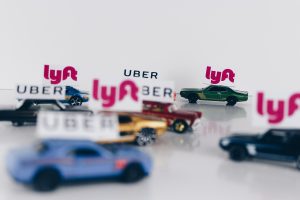San Francisco just took a big step in supporting electric vehicles, public transit and active transportation. 67.65% of SF voters supported Measure D in the November 5, 2019 elections. Measure D was the product of a year-long process of negotiations between San Francisco, ride hailing companies like Lyft and Uber, and advocates for clean air, transit, biking and pedestrians. And while Measure D could’ve been stronger (more on that later), it’s a model for cities trying to break their dependency on cars.
What was Measure D?
While ride hailing companies have improved mobility for some, they’ve also created traffic congestion and air pollution. To address this, Measure D will enact a fee on rides with Uber, Lyft or other Transportation Network Companies. The revenues from the fee will be invested in Muni transit service, as well as pedestrian and biking safety. Further, the fee will be structured to favor electric vehicles and ridesharing. Rides in zero-emissions vehicles and shared rides will have a 1.5% fee, while all other rides will be charged a 3.25% fee.
In total, San Francisco anticipates Measure D will generate up to $35 million annually for the Traffic Congestion Mitigation Fund. Half of the funding would be used to improve and expand San Francisco’s Muni bus and light rail system. The other half would be spent on biking and pedestrian safety improvements, known as Complete Streets projects.
Why does Measure D create ride hailing fee?
Simply put – ride hailing depends on driving, which results in traffic and air pollution. In 2017, the San Francisco County Transportation Authority estimated ride hailing vehicles within San Francisco added over 570,000 miles on a typical weekday. Ride hailing accounted for nearly 20% of all vehicle miles traveled within The City. Further, ride hailing trips were overwhelmingly concentrated within San Francisco’s downtown core, causing traffic congestion there and in the surrounding communities. Between 2010 and 2016, ride hailing cars were responsible for roughly half of San Francisco’s increased traffic. Another problem is the issue of deadheading: driving around without passengers. This occurs when cars are in between trips or are waiting to be matched to passengers. Preliminary data from the California Air Resources Board suggests ride hailing cars carry fewer passengers per mile than the average car in California. This means ride hailing vehicles have higher emissions per passenger mile traveled than the average California car.
Ride hailing businesses also put more cars on the road because they take passengers away from public transit. Researchers from the University of Kentucky found rail and bus ridership fell an average 1.29% and 1.7% (respectively) after ride hailing companies entered a city. In California, Los Angeles Metro has experienced a 3.4% drop in ridership, part of which is likely due to ride hailing. Similarly, San Francisco has experienced a 12.7% decrease since Uber and Lyft entered the market.
As it is, California relies heavily on cars to get around. Driving even more will make meeting California’s climate and air quality commitments very difficult, if not impossible. While other sectors of the economy have reduced their greenhouse gas pollution, tailpipe emissions are up 5% since 2013. Ultimately, if we want a healthier climate and cleaner air, we will need to use cars less as well as electrify and share what miles we do drive.
How could Measure D been stronger?
While we supported Measure D, the proposition still could’ve been even stronger. The ride hailing fee is designed to, among other things, incentivize both supply (Uber and Lyft cars) and demand (passengers) to reduce emissions. Drivers with zero-emissions vehicles will have a market advantage as passengers will pay less, and passengers will have an incentive to save money by riding electric or in a share ride. However, the true gold standard for reducing air pollution are shared rides in zero-emissions cars. As such, CCA believes shared rides in zero-emission vehicles should be have no fee at all. Recognizing this, the law authorizing San Francisco to implement a ride hailing fee, AB 1184 (Ting, 2018), allows San Francisco implement such a fee. However, Measure D did not include this provision.
Other cities are taking note
San Francisco’s congestion and transit problems are not unique, nor are ride hailing fees. Cities around the world and the United States are considering and implementing ride hailing fees. The fact is our air, transit and roads are shared responsibilities. Every car on the road – including ride hailing cars – contributes to congestion, damaged roadways, pollution and the climate crisis. While ride hailing is a very valuable service to customers, these companies need to share responsibility for the problems they cause. The Coalition for Clean Air strongly believes that these policies are necessary, and we encourage other cities to adopt a TNC fee structure that favors electrified, shared and electrified and shared rides.








